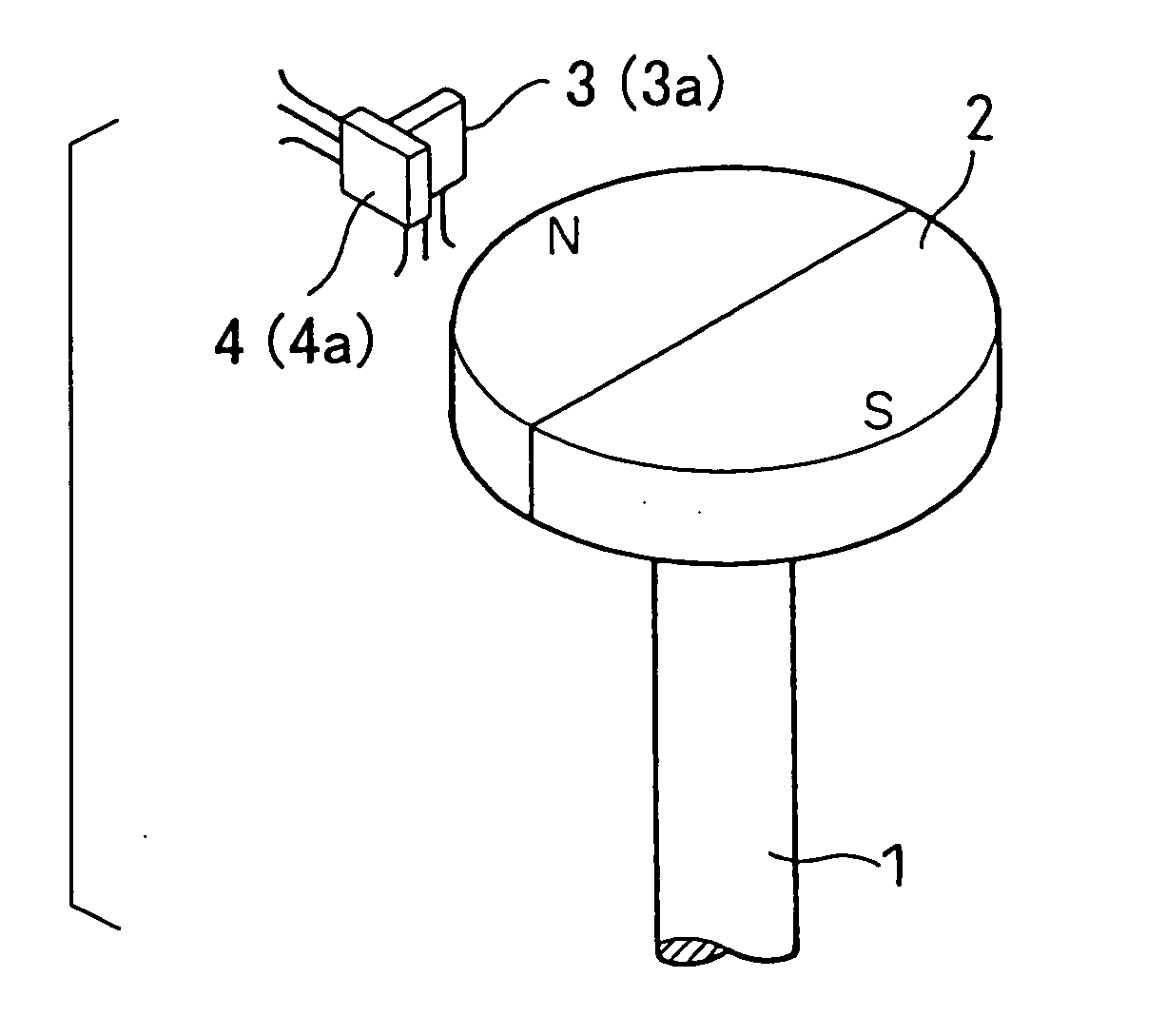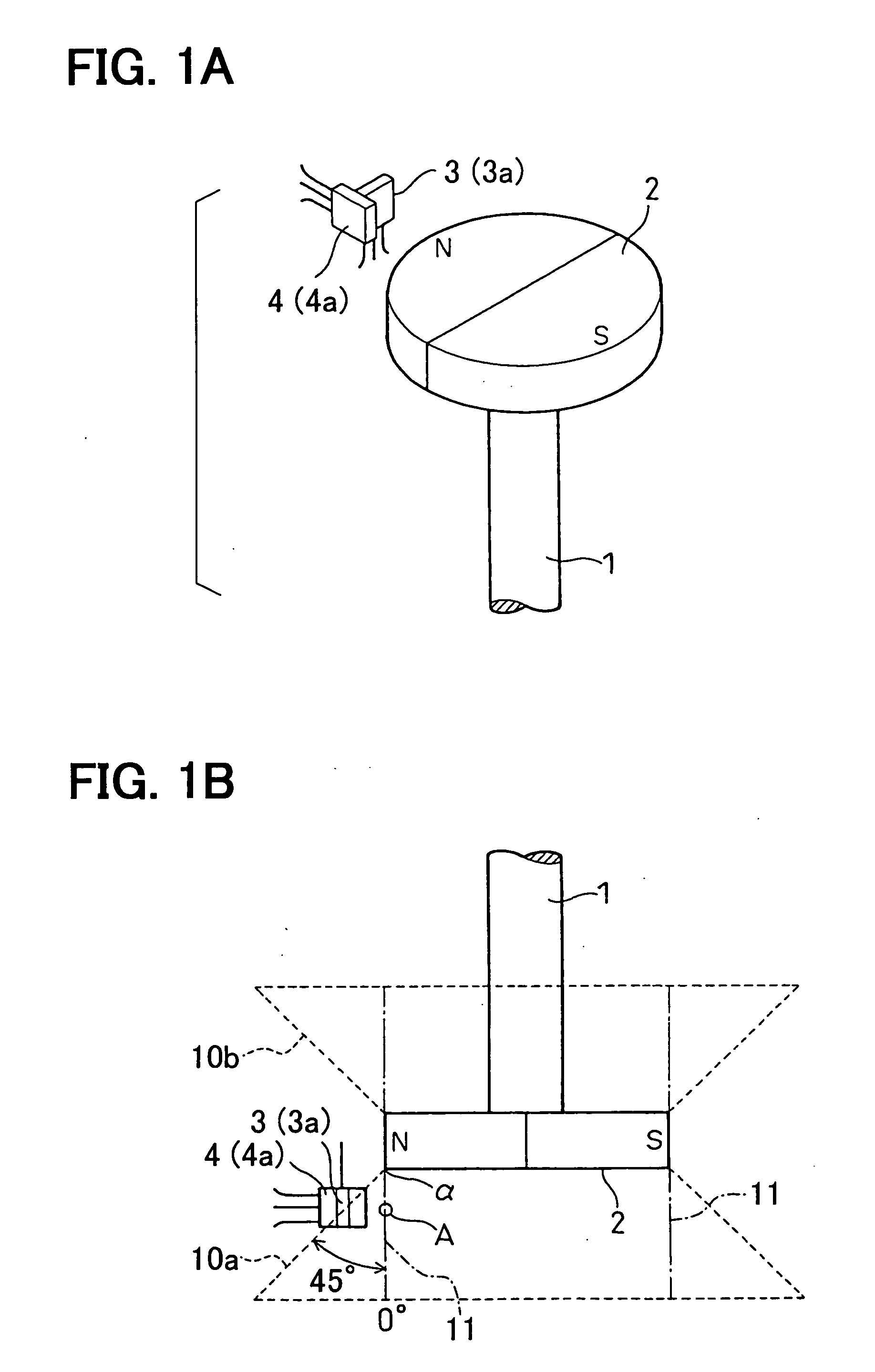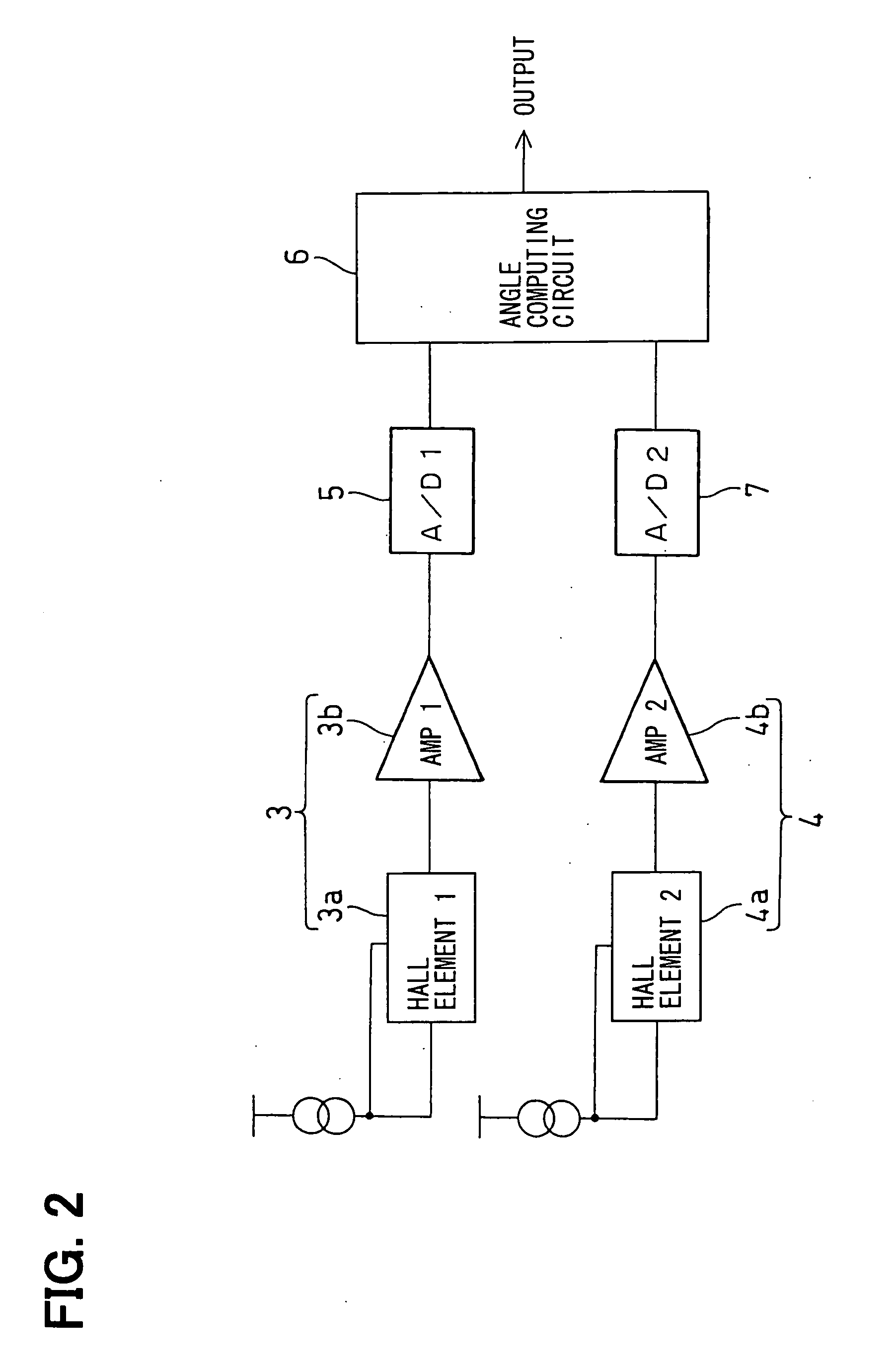Rotational angle sensing device and assembling method thereof
a sensing device and rotational angle technology, applied in galvano-magnetic devices, galvano-magnetic hall-effect devices, instruments, etc., can solve the problems of substantial difference, inability to provide the accommodating space for the first and second hall ics b>3, and difficulty in measuring rotational angle, so as to improve the arrangement of two magnetic sensing elements
- Summary
- Abstract
- Description
- Claims
- Application Information
AI Technical Summary
Benefits of technology
Problems solved by technology
Method used
Image
Examples
first embodiment
[0029] A first embodiment of the present invention will be described with reference to FIGS. 1 to 6.
[0030] First, a basic structure of a rotational angle sensing device according to the first embodiment will be described with reference to FIGS. 1A to 2. FIG. 1A is a schematic perspective view of the rotational angle sensing device, and FIG. 1B is a schematic inverted side view of the rotational angle sensing device. FIG. 2 is a schematic circuit diagram of the rotational angle sensing device.
[0031] The rotational angle sensing device of the present embodiment measures a rotational angle of a rotatable shaft 1 of, for example, a throttle valve (e.g., a degree of opening of the throttle valve). The rotational angle sensing device includes a magnet 2 and first and second Hall ICs 3, 4. The magnet 2 is secured to thr rotatable shaft 1 (a rotatable member, which is one of two members that make relative rotation therebetween). The first and second Hall ICs 3, 4 are mounted to an undepic...
second embodiment
[0055] A second embodiment of the present invention will be described with reference to FIG. 7.
[0056] In the first embodiment, the first Hall IC 3, which includes the first Hall element 3a, is arranged adjacent the second Hall IC 4, which includes the second Hall element 4a.
[0057] In the second embodiment, the first Hall element 3a and the second Hall element 4a are arranged in a single chip 8. The first and second Hall elements 3a, 4a, which are encapsulated in the single chip 8, are arranged in a manner similar to that of the first embodiment. Thus, the magnetic sensing surface of the first Hall element 3a is parallel to the tangent line or the tangent plane, which is tangent to the outer peripheral circular edge of the magnet 2, and the magnetic sensing surface of the second Hall element 4a is perpendicular to the tangent line or the tangent plane, which is tangent to the outer peripheral circular edge of the magnet 2. Therefore, the magnetic sensing surface of the second Hall ...
third embodiment
[0060] A third embodiment according to the present invention will be described with reference to FIGS. 8A to 9.
[0061] In the first and second embodiments, there is described the case where the single magnet 2 is used.
[0062] In the third embodiment, as shown in FIG. 8, two substantially identical coaxial magnets (main and auxiliary magnets) 2, which generally have the same radial thickness, the same thickness and the same magnetic force, are provided. The magnets 2 are spaced from one another in the axial direction of the rotatable shaft 1. The first and second Hall elements 3a, 4a are positioned between the two magnets 2 in the axial direction. Here, the settings, such as the diameter of each magnet2, the gap between each magnet 2 and the first and second Hall elements 3a, 4a and the installation angle of the first and second Hall elements 3a, 4a relative to the outer peripheral edge a of each magnet 2, are the same as those of the first embodiment.
[0063] Next, the advantage of t...
PUM
 Login to View More
Login to View More Abstract
Description
Claims
Application Information
 Login to View More
Login to View More - R&D
- Intellectual Property
- Life Sciences
- Materials
- Tech Scout
- Unparalleled Data Quality
- Higher Quality Content
- 60% Fewer Hallucinations
Browse by: Latest US Patents, China's latest patents, Technical Efficacy Thesaurus, Application Domain, Technology Topic, Popular Technical Reports.
© 2025 PatSnap. All rights reserved.Legal|Privacy policy|Modern Slavery Act Transparency Statement|Sitemap|About US| Contact US: help@patsnap.com



